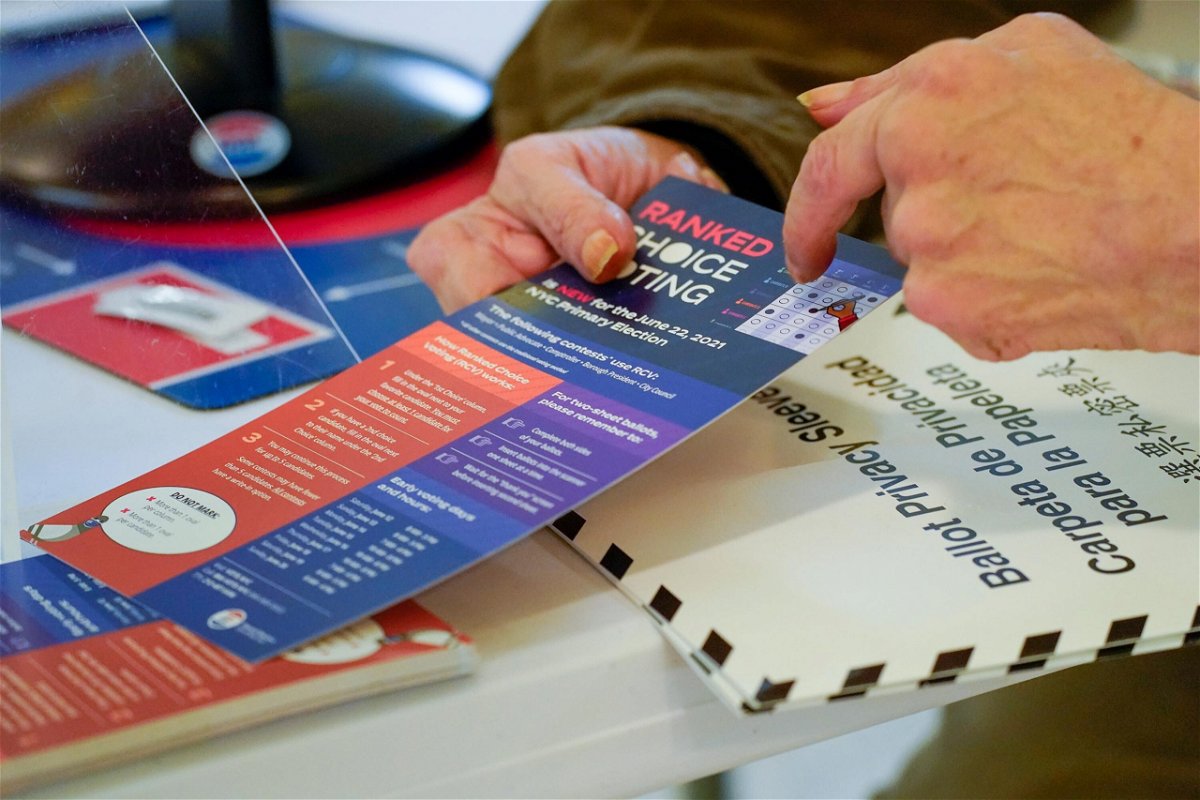Why ‘instant runoff’ voting in New York doesn’t mean instant results

By Ethan Cohen and Adam Levy, CNN
New York City is rolling out ranked-choice voting in its mayoral primary and several other key races, becoming the largest US jurisdiction to give the voting system a try.
Under this system, voters rate their top five choices in order of preference instead of picking just one — a change that allows the city to avoid a separate runoff election in the crowded 13-person Democratic mayoral primary, where no candidate is expected to reach the 50% threshold required to win the primary outright. (The general election, to be held in November, will use a standard ballot.)
But while it’s sometimes referred to as “instant runoff” voting, the primary vote count in New York will be anything but fast, because the city had to wait to begin count mail ballots.
Preliminary results from in-person voting were released once polling closed on June 22, but the Board of Elections had to wait until it could start further tabulations or begin opening mail ballots — which are expected to play a significant role in the mayoral primary.
Here’s the current calendar from the New York City Board of Elections:
- June 20: Last day of in-person early voting in NYC. Voters were given nine days to vote in person before Election Day.
- June 22 (Election Day): First-choice results from ballots cast in person early or on Election Day were released after polls close.
- June 28: Elections officials began to process absentee ballots.
- June 29: Deadline for all mail ballots, which must be postmarked by Election Day. Ranked-choice voting results released from ballots cast early or on Election Day.
- July 6: Updated ranked-choice voting results will be released including all mail ballots that have been validated. Results will be updated weekly until all mail ballots have been tabulated.
Here’s what to know about how it works.
How the ballots look
Unlike a traditional ballot, which just has one place per candidate to mark a choice, a ranked-choice ballot has a grid. For each race on this ballot, candidates are listed on the left, and each column corresponds to a choice: either first, second, third, fourth or fifth.
Errors could be a problem
There are two major mistakes that could result in votes being invalidated.
Voters may not rank a candidate more than once on a ballot. Even if they’re a big fan of just one candidate, trying to mark the same candidate as a first, second and third choice is exactly the same as marking them just as a first choice and leaving the rest of the choices blank.
Voters may not select multiple candidates in one ranking. Giving more than one candidate the same ranking will invalidate not only that choice, but also any further rankings in that race. For example, if two candidates are marked as a voter’s second choice, that ballot will be invalidated after the first choice is eliminated. Voters are not required to rank five candidates. If a voter only has three choices, ranking them in spots one, two, and three while leaving spots four and five blank is acceptable.
How the count will work
If no candidate receives more than 50% of the first-choice votes, tabulation will be conducted in rounds.
The candidate with fewest votes after the initial count is eliminated and all ballots for that candidate will be reallocated to the next highest-ranked candidate selected. That process will continue until two candidates are left, with the winner determined by who has the most votes in that final round.
What the results will look like
Results of a ranked-choice election also look different from other elections.
In previous elections, a simple list of candidates with vote totals for each would be shown. Ranked-choice elections results are displayed in a grid. Each column represents a round of the ranked-choice voting process. The candidates marked in red received the fewest votes and is therefore eliminated. Those votes are redistributed to whomever those voters ranked next on their ballot. That’s why remaining candidates can gain votes each round. When there are only two candidates left, whoever has the most votes wins.
The other unique element of these results is the row at the bottom for “inactive ballots.” Those ballots, also sometimes called “exhausted” ballots, are ballots for which there are no candidate selected who remains in the running.
For example, if a voter selects only first and second choices, and those candidates are eliminated in the first two rounds, their ballot would be “inactive” and won’t be included in the rest of the process.
This story has been updated with the latest developments in the count.
The-CNN-Wire
™ & © 2021 Cable News Network, Inc., a WarnerMedia Company. All rights reserved.